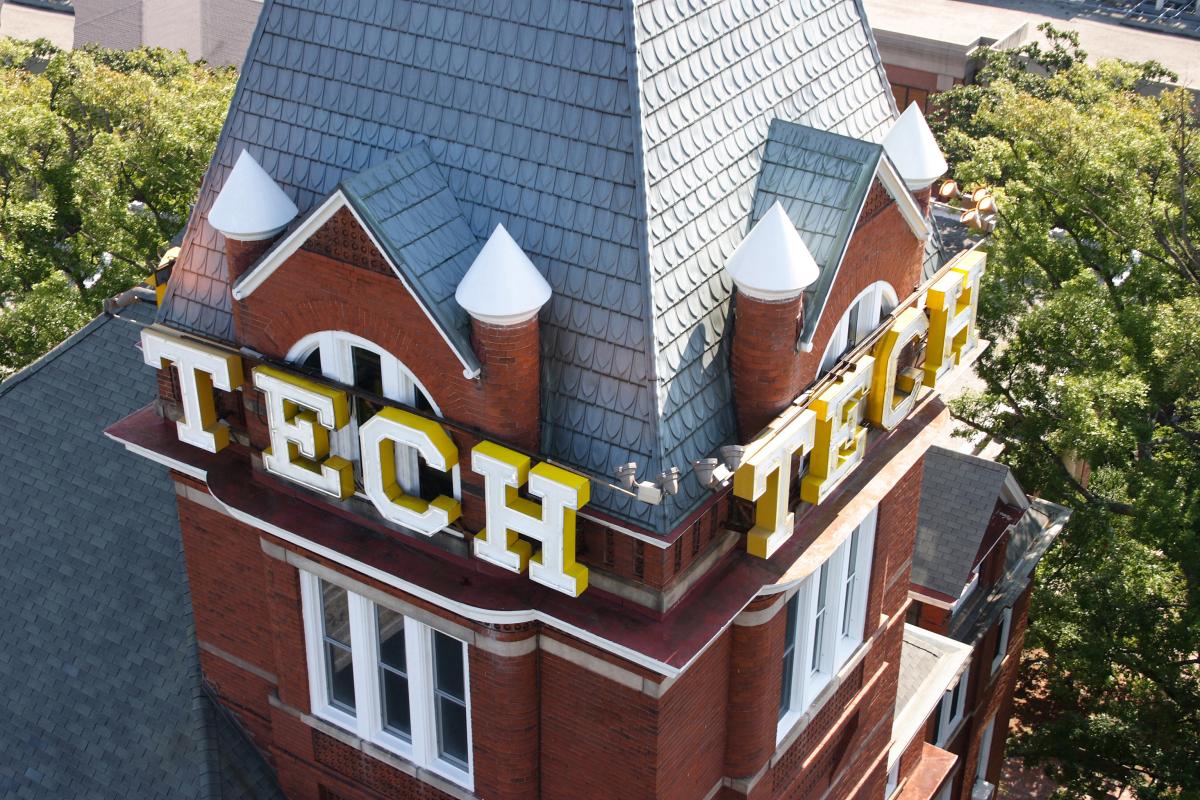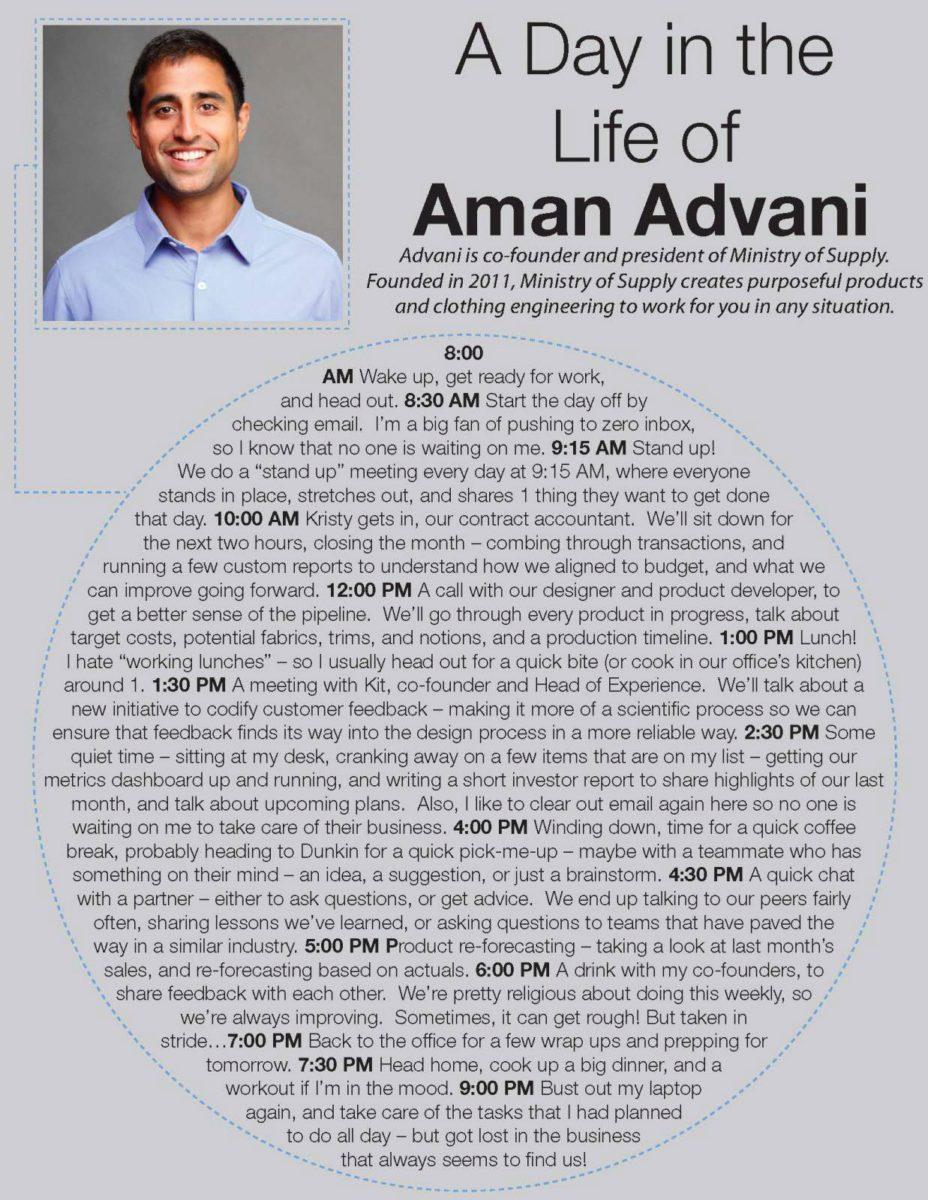
Since launching on Kickstarter in 2012, they’ve released a full line of men's "Performance Professional" products. Ministry of Supply focuses on an understanding of the human body, technical fibers and fabrics, and advanced manufacturing techniques, making it the most comfortable and sharp set of apparel on the market. For example, the Apollo dress shirt uses NASA technology, embedded within the fibers of the shirt, to proactively cool or warm your body in times of need - avoiding sweat stains, wrinkles, and odors. With a team of ten, they just completed a Series Seed fundraising, and wrapped up their first full calendar year - shipping about 40,000 units to about 20,000 customers.
ISyE recently spoke to Advani to learn more about how he blends his engineering background with a sense of fashion and design.
Why fashion? What inspired you to go into this industry?
As an outdoor enthusiast, I’ve always been interested in how fashion and function interact. That’s the nature of what we’re trying to do – taking a lot inspiration for how comfortable we are on the field or at the gym, and bringing those familiar principles to a new category. And since we’re engineers by nature, it came naturally.
Tell us about founding Ministry of Supply?
We started the company in 2011 while I was at MIT for business school. Having prototyped a few items, I met up with my co-founders during my first year of grad school. They were also marching forward on the same concept, so it was natural (and serendipitous) that we joined. We also had a very similar vision in terms of the deeper “why” we were doing this, and complimentary skill sets.
Other than co-founder, what role do you play in the company?
I’m the President – focused on making sure our goals are clear, and that the whole team is marching towards them every day, week, quarter, etc. In addition (we each wear many hats!) I focus on product operations (sourcing, production, and fulfillment) and finances (accounting, reporting, and planning).
Do you use your IE skills in your role in the company?
Every day. A lot of the issues we learned to deal with in our ISyE classes come to life so frequently. For instance, we talk safety stocks, logistics, optimization, and even some light system dynamics. It’s fantastic to see the text book solutions come alive on such a regular basis.
What is the Ministry of Supply’s guiding principle for addressing fashion?
We’re focused on breaking down the limitations of current fashion by using customer input and feedback – starting with a fundamental understanding of the human body (through various testing mechanisms, like thermal imaging). Then, we use advanced materials and technical manufacturing methods (like seamless knitting or bonding) to solve the issues that we understand.
What are some of the most interesting innovations in your company?
One of our first innovations was utilizing Phase Change Materials – initially developed for NASA space suits – in our dress shirts. PCMs effectively regulate your temperature by melting or freezing near your ideal skin temperature (freezing or melting to transfer energy, thus affecting temperature). We embed technology like PCMs into our fibers – and since, have found other “platforms” that we rely upon, such as toasted coffee grounds embedded within the fibers of our socks, sweaters, and undershirts to naturally combat odor.
Describe some of your favorite fashion items that your company produces/sells and what makes them special?
I’ve always been a huge fan of socks, and ours are pretty spectacular. We start with strain analysis, and follow with pressure mapping – to create the most comfortable dress sock (or loafer sock) on the market – built for the male stride, like wearing your favorite gym socks to work. We also leverage similar technology in our ATMOS t-shirt, which uses thermal imaging to map ventilation panels on to the t-shirt, to proactively keep you cool. The best part is that for both of these products, we use seamless knitting machines – think 3D printing for fashion.
And finally, one more question. What is one of your fondest memories from your time at Georgia Tech’s Stewart School of Industrial & Systems Engineering?
Senior Design in 2007, my team pulled an all-nighter after Thanksgiving, since we were fall graduates. It ended up being a blast - we brought snacks, drinks, and tunes to the computer lab and cranked away all night. I don't think I recognized it then, but all-nighters (quite frequent) were definitely as much fun as they were painful. I remember the intense and great feeling of our simulation working for the first time just as the sun was rising. We went out for a big breakfast to celebrate, and then slept for a day straight.
For More Information Contact
Barbara Christopher
Industrial and Systems Engineering
404.385.3102
